Non-native invasive buckthorn has infested your woodland. How do you restore the native woodland habitat that existed before the buckthorn problem? My favored method of buckthorn control is cut-stump treatment. Done properly, the benefits of controlling buckthorn by cut-stump treatment include:
~up to 100% effective against buckthorn regrowth
~use of glyphosate is cheaper and less hazardous than many herbicides
~very minimal amount of herbicide is used
~roots die but remain in soil to stabilize against erosion
~buckthorn removal is completed much faster than with a wrenching tool
~avoids soil disturbance to minimize future weed germination
To begin, refer back to the winter identification techniques in my previous blog segment to be confident you are removing buckthorn versus native plants. Have 18-20% strength glyphosate on hand. Glyphosate is a non-selective herbicide sold under the brand name RoundUp and various generic brands.
~up to 100% effective against buckthorn regrowth
~use of glyphosate is cheaper and less hazardous than many herbicides
~very minimal amount of herbicide is used
~roots die but remain in soil to stabilize against erosion
~buckthorn removal is completed much faster than with a wrenching tool
~avoids soil disturbance to minimize future weed germination
To begin, refer back to the winter identification techniques in my previous blog segment to be confident you are removing buckthorn versus native plants. Have 18-20% strength glyphosate on hand. Glyphosate is a non-selective herbicide sold under the brand name RoundUp and various generic brands.
The active ingredient strength is listed on the product label and usually found on the front, bottom right corner of the container.
Head out to your buckthorn patch and begin by cutting the buckthorn slightly above the soil line. This prevents a tripping hazard and places herbicide close to the root system for maximum effectiveness. I apply glyphosate around the outer ½” edge of the freshly cut stump where the cambium layer is located. The cambium layer absorbs the glyphosate and transports it to buckthorn’s roots.
NOTE: Suspend use of glyphosate between May and July when the cambium transports energy upward for leaf development.
Glyphosate may be applied with a disposable foam craft brush dipped into glyphosate. However, I use and highly recommend the Buckthorn Blaster®, a hand-held herbicide applicator that will hold up to 4 ounces of glyphosate. Herbicide is released when the foam applicator tip is placed against the stump and pressure applied. A Buckthorn Blaster® eliminates the spilling risk of open herbicide containers. It will use less herbicide then spraying which may also be hazardous to the applicator and non-targeted native plants.
< class=”mceTemp”>Glyphosate is colorless without the addition of indicator dye. Use of indicator dye will show what areas have been treated. Missing a small section of the cambium during cut-stump treatment may result in buckthorn resprouts. I add ½-1 tsp. of concentrated water soluble indicator dye before filling my Buckthorn Blaster® with glyphosate.
< class=”wp-caption-dt”>
< class=”mceTemp”>Glyphosate is colorless without the addition of indicator dye. Use of indicator dye will show what areas have been treated. Missing a small section of the cambium during cut-stump treatment may result in buckthorn resprouts. I add ½-1 tsp. of concentrated water soluble indicator dye before filling my Buckthorn Blaster® with glyphosate.
< class=”wp-caption-dt”>
The Buckthorn Blaster® and indicator dye are available at www.landscape-restoration.com under the PRODUCTS tab.







